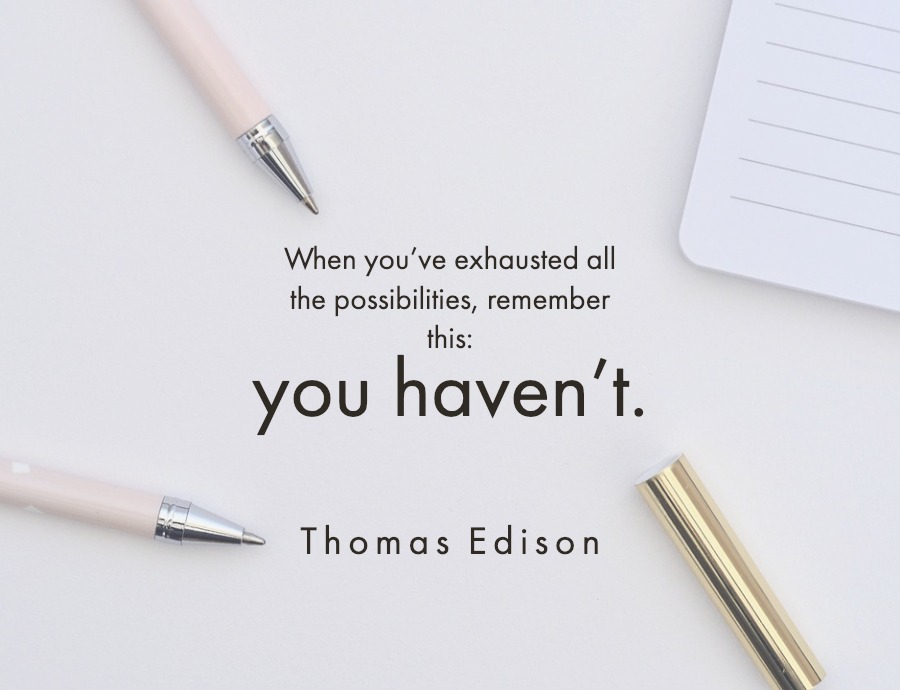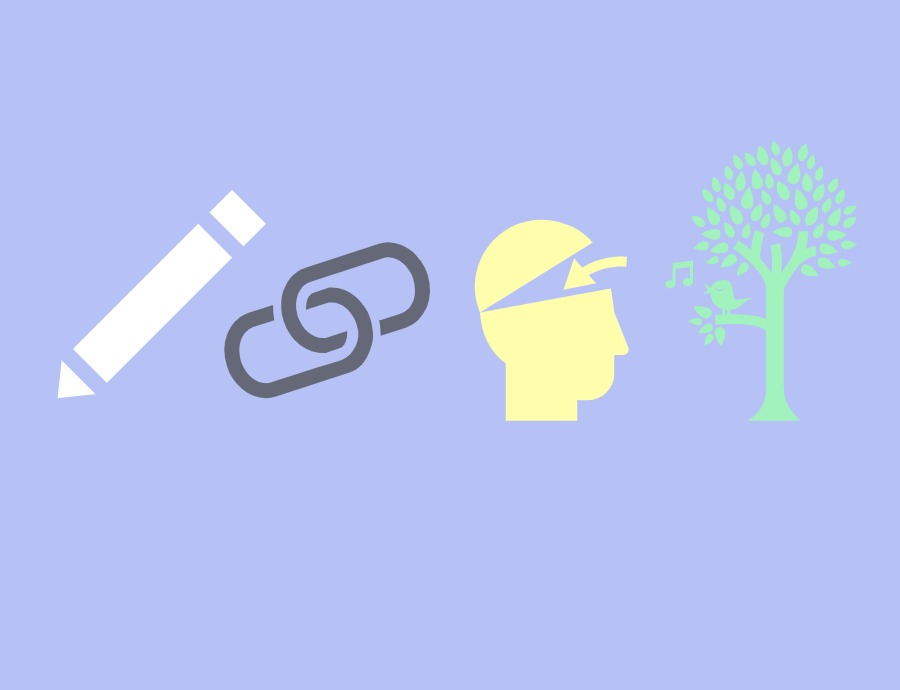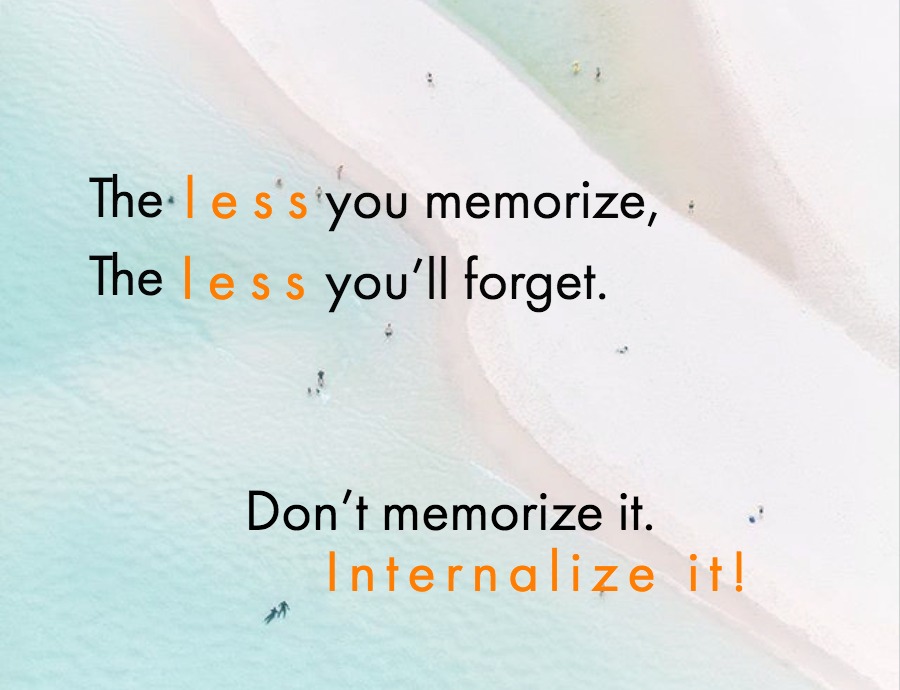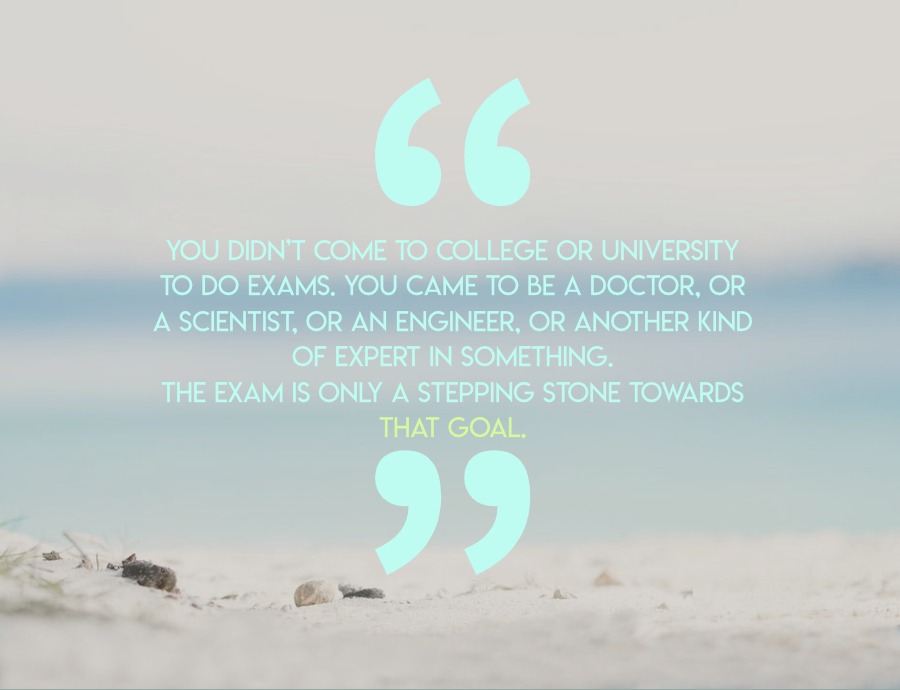Often the problem isn’t the assignment, or our understanding, or our skills; the problem is our nature.
When a solution to a test or assignment isn’t working, it’s hard to figure out what to do next. We know that we need to start again from the beginning. We know that we need to rethink our assumptions and strategies. We often trick ourselves into believing we’re doing just that, when, in reality, we’re just rewriting the same failed solution over and over again. It can be hard not to think defeatist thoughts. But the problem isn’t that we can’t do it; the problem is that we’re stuck in a problem solving rut.
Next time you’re in a rut, look out for these common pitfalls, and work to overcome them, so that we can actually, honestly, start again from scratch.
Don’t depend too much on your first ideas. Once we’ve had an initial idea, it’s hard to put that idea aside and think of something completely different. We’ve created a neural pathway, and the more we think about it, the stronger that pathway becomes. The problem is that our initial idea can be wrong. If you’ve been working on a problem and it’s just not working, you need to put aside that first idea. The best way is to simply walk away. Think about something completely different. Work on something new. Then come back to the problem with a new perspective.
Break out of the mold. Don’t just try variations of the idea that isn’t working. Try something completely different, another technique, another set of assumptions. You might need a change of scene or mental-space to make this possible, so skip forward to another, different type of question to work on, or get up and walk around.
Don’t protect earlier work. It’s tempting to justify our earlier decisions, and to tailor new work around the assumptions and planning we’ve already worked out. If our solution isn’t working, then ditch everything. Don’t even look at it again. Start again, from scratch, on a new piece of paper.
Kill the confirmation bias. The confirmation bias is a tendency to see only facts that confirm what we already think. Avoid this. This bias keeps us from seeing the information that can crack the problem and challenge our way of thinking. Make sure that you look closely, with an open mind, so that you’re not just seeing what you want to see.
Don’t get stuck; get moving. You’ll have any number of tasks that you can be working on, so if you feel yourself falling into a rut, then break out of it by working on something new. If you’re working on an assignment, then put it aside and work on a different subject. If you’re writing a test or exam, then skip forward to a very different type of problem. Give yourself time and space, and come back refreshed.
When a solution to a test or assignment isn’t working, it’s hard to figure out what to do next. We know that we need to start again from the beginning. We know that we need to rethink our assumptions and strategies. We often trick ourselves into believing we’re doing just that, when, in reality, we’re just rewriting the same failed solution over and over again. It can be hard not to think defeatist thoughts. But the problem isn’t that we can’t do it; the problem is that we’re stuck in a problem solving rut.
Next time you’re in a rut, look out for these common pitfalls, and work to overcome them, so that we can actually, honestly, start again from scratch.
Don’t depend too much on your first ideas. Once we’ve had an initial idea, it’s hard to put that idea aside and think of something completely different. We’ve created a neural pathway, and the more we think about it, the stronger that pathway becomes. The problem is that our initial idea can be wrong. If you’ve been working on a problem and it’s just not working, you need to put aside that first idea. The best way is to simply walk away. Think about something completely different. Work on something new. Then come back to the problem with a new perspective.
Break out of the mold. Don’t just try variations of the idea that isn’t working. Try something completely different, another technique, another set of assumptions. You might need a change of scene or mental-space to make this possible, so skip forward to another, different type of question to work on, or get up and walk around.
Don’t protect earlier work. It’s tempting to justify our earlier decisions, and to tailor new work around the assumptions and planning we’ve already worked out. If our solution isn’t working, then ditch everything. Don’t even look at it again. Start again, from scratch, on a new piece of paper.
Kill the confirmation bias. The confirmation bias is a tendency to see only facts that confirm what we already think. Avoid this. This bias keeps us from seeing the information that can crack the problem and challenge our way of thinking. Make sure that you look closely, with an open mind, so that you’re not just seeing what you want to see.
Don’t get stuck; get moving. You’ll have any number of tasks that you can be working on, so if you feel yourself falling into a rut, then break out of it by working on something new. If you’re working on an assignment, then put it aside and work on a different subject. If you’re writing a test or exam, then skip forward to a very different type of problem. Give yourself time and space, and come back refreshed.








